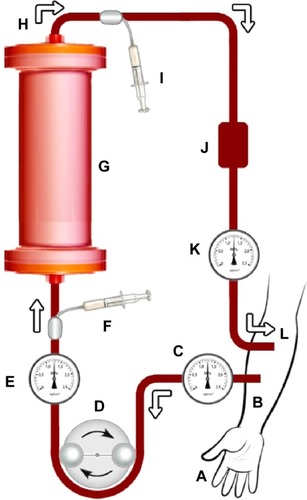Figures & data
Figure 1 Schematic diagram of proposed extracorporeal viral antibody column (EVAC), an auxiliary therapy to reduce blood viral titers when treating viral infections in the blood by removing viral antigens and toxins from the bloodstream.

